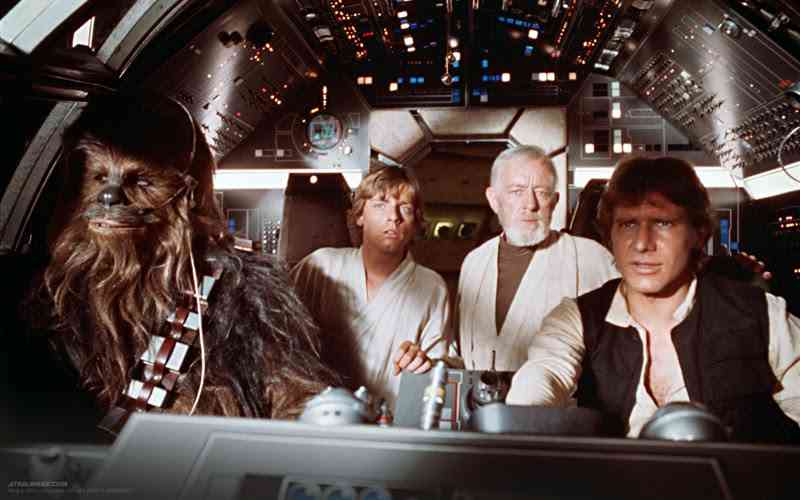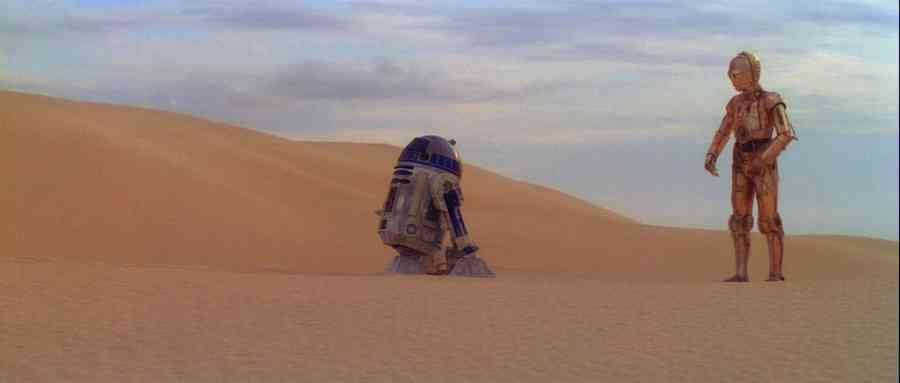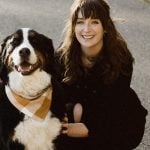Ben Burtt, well-known Star Wars Sound Designer who created such iconic sounds as R2-D2’s beeping communication and Darth Vader’s breathing, is being honored by the Locarno Film Festival at its 2024 edition with the Vision Award Ticinomoda, a prize dedicated to creatives whose work has extended the horizons of cinema. The Hollywood Reporter journalist, Scott Roxborough recently sat down with Burtt for a sweeping interview cataloguing many of the highlights of Burtt’s illustrious career.

Burtt doesn’t shy away from providing behind-the-scenes detail on how many of the familiar sounds of Star Wars came to be. Asked about the original concept for sound design on A New Hope, Burtt said:
“Well, at the time, most science fiction films contained sound effects and ambiance that were electronic in nature. Things sort of derived from Forbidden Planet, you know, that wonderful electronic score and sound effects that were made for that film. George felt that was a cliche by this point, so he didn’t want to have a synthetic or electronic score or electronic effects of any kind. He described it to me as an organic soundtrack, which meant, let’s go out in the real world and gather acoustic sounds, be they motors, animals or jet planes. Let’s fashion the world of Star Wars out of these real sounds. The idea being that people would inherently recognize the reality of those sounds, the naturalness of them.
When the Millennium Falcon’s doors open, it should sound mechanical, it might squeak, it might be rusty. Because I came from a background in physics and I loved 2001, I initially thought: Well, there’s no sound in space, and I told George that. He was kind of puzzled but he said. ‘Well, we’re going to have sound and music in space.’ He wasn’t shy about creating a world where you hear everything in space. And thank heavens, I guess, because that gave me a career.
We were building more on Flash Gordon and those serials, but creating a more naturalistic science fiction-fantasy environment where the robots are beat up and dented and dirty, where the world wasn’t pristine and clean like you might have found in other science fiction at the time, with people wearing immaculate, beautiful, well-ironed costumes in bright colors.”

Once again an anecdote of Lucas simply disregarding real-world science when creating Star Wars–there is sound! There is fire! Let it be, folks! That aside, one of the reasons that Star Wars is so special is its’ ability to take viewers to worlds that are at once familiar and exotic, and Burtt’s successful implementation of George’s vision played a critical role in this endeavor.
On the lack of translation for R2-D2, Burtt said:
George’s intention from the beginning was to not have any subtitling. A lot of times, C-3PO translates what R2-D2 is saying, but for the rest of it, you can infer the meaning because of our universal understanding of non-word expressive sounds. We worked really hard to get those expressive sounds in there. So when R2-D2 makes a rude sound, you know he’s cursing, that he’s frustrated. He can be cute, he can be innocent. And that was important to us — that he was like this little five-year-old in the midst of all this warfare and traveling through the desert, whatever. It’s hard to go back and describe how we were imagining it because we didn’t know, or think we’d be talking about it 50 years later.

Burtt also had to come up with a creative solution for Darth Vader’s breathing and ended up including a recording of his own breathing sounds as part of the final product.
Yes, that’s me breathing. It came about because the script described Darth Vader as having a respirator, some kind of breath mask with a life support system. That’s about as far as the description went. I went to a dive shop here in Marin County where they sold equipment and gave evening lessons. After the lessons were over, there were all these scuba tanks with regulators just lying around the pool. I went around and just recorded different ones breathing through them at different rates. I had a little tiny microphone that I could stuff inside the valve, so it was a very magnified recording of this mechanical opening and closing. Then later I slowed the recording down a bit and that became Darth Vader. We had to cut the breathing to be in rhythm with the speech of James Earl Jones [who voiced Vader] but it was fairly straightforward. Initially, I had too many sounds going: There was the respirator, then beeping, and clicking, mechanical sounds when he was moving, but it was too distracting. So I stripped everything away everything except the breathing. Which of course stuck and has become iconic.

Ben Burtt also described how his career unfolded after the success of Star Wars:
“Star Wars led to a full-time job at Lucasfilm as a sound designer and ultimately film editor. But it was the beginning of the process. I was very new to the business. I had made some sounds for some Roger Corman movies [including Death Race 2000], I’d done some trailers and had a tiny bit of experience in independent films. But that was my first real feature. I was learning as I went. By the time we set out to do the second film, The Empire Strikes Back, we had a much better approach, incorporating a working process to break down the script, break down all the recording projects, and delegate it step by step. We learned fast and we worked out our own system. We didn’t have a lot of Hollywood old-timers or people with experience so we were left to devise our own system.
But I got used to having the man in charge — whether it was Lucas or Spielberg — pay very close attention to the sound design, usually before shooting. Which was not the normal process for sound in Hollywood at the time. People didn’t want to spend money having sound people work on development, they would just bring people on once the picture was locked and the sound people would be expected to work from their studio’s library of pre-recorded sounds. What we developed at Lucasfilm in Northern California eventually became part of a revolution throughout the business.”
Check out the full interview here, and don’t forget to enjoy R2-D2’s indignant beeps, the rusty whine of the Millennium Falcon opening up, or Vader’s unsettling mechanical breathing the next time you boot up the original trilogy.
If the D23 news got lost in the shuffle for you over the weekend, don’t worry, we have you covered! Start with a recap of Jon Favreau and Dave Filoni talking about the upcoming The Mandalorian and Grogu movie and then move over to Diego Luna’s comments on Andor’s final season.

When she isn’t watching her friends and family’s eyes glaze over at the mention of The Clone Wars, she’s at the park with her dog, Melvin, or on the couch with a book in one hand and a drink in the other. Physically, she lives in Ohio; spiritually, she lives in Naboo.
source: www.starwarsnewsnet.com